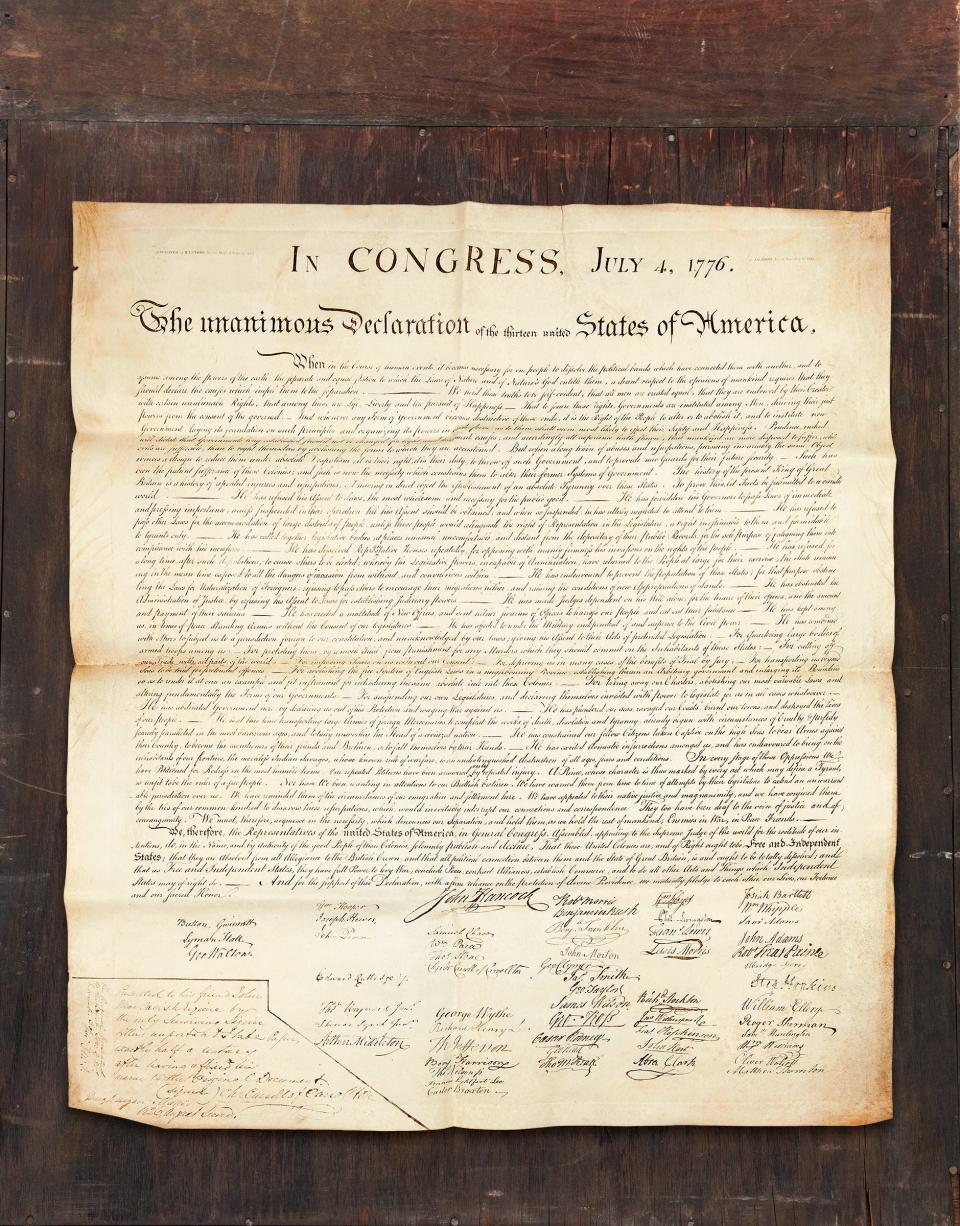A woman found a rare copy of the Declaration of Independence in a Scotland attic, and it sold for more than $4 million at auction

An auction-house worker found a copy of the Declaration of Independence in an attic in Scotland.
The location of the rare copy of the document had been unknown for 177 years.
Freeman's, an auction house in the US, sold the rare copy for more than $4 million on Thursday.
Recently, Cathy Marsden, a specialist at the UK-based auction house Lyon & Turnbull, told the BBC that she was sifting through piles of old papers in an attic at a home in Edinburgh, Scotland, when she came across a folded document that looked like the Declaration of Independence.
Marsden told the BBC that after some research, she realized she was holding one of 201 copies of the Declaration of Independence made by the printer William Stone. Stone was commissioned by John Quincy Adams, then-secretary of state, in 1820 to make official copies of the document in an effort to preserve its history, according to the National Archives.
On Thursday, Freeman's, an auction house in Philadelphia and the sister company of Lyon & Turnbull, sold the rare copy that Marsden found to an anonymous buyer for nearly $4.5 million, according to a press release from Freeman's.
The total is about five times what Freeman's estimated it would go for, and the document became the highest-selling copy of the Declaration made by Stone, according to the same press release.

The rare copy of the Declaration transcended generations and borders
In 1823, Congress commissioned the printing of 200 copies of the Declaration of Independence with Stone's engraving, according to the National Archives.
Charles Caroll, the last survivor of the 56 people who signed the Declaration of Independence on July 4, 1776, was given two of the copies printed by Stone, according to the press release from Freeman's.
Caroll died in 1832 and the copy was passed on to his grandson-in-law, John MacTavish, who married Carroll's granddaughter Emily Caton. MacTavish later signed it, according to the press release. After that, the copy was passed down to a Scottish family, and its location had been unknown for 177 years, until Marsden found it, the press release states.
"What at first glance appeared to be an unassuming old document nestled within a pile of papers, has turned out to be a fascinating and important piece of American history," Marsden said in a statement from Freeman's that was obtained by Insider.
The document was likely put on a sailing ship to the British Isles in the 1800s before being transported to a horse-drawn carriage or train, Darren Winston, head of Freeman's Books and Manuscripts department, said, according to the press release. It probably took about six weeks.
Then almost 200 years later after being rediscovered, it was shipped back to the US via plane and car in about two days, he added.
"That's not just a long time between trips; that's practically the entire history of transportation," Winston said, according to a press release obtained by Insider.
Citing Seth Kaller's current census of the Stone facsimiles, the Freeman's press release stated that only 52 of Stone's Declaration copies are still around today.
For July 4, the National Park Service is loaning the rediscovered piece of history to display at Philadelphia's Second Bank of the United States, according to a press release obtained by Insider.
Read the original article on Insider

